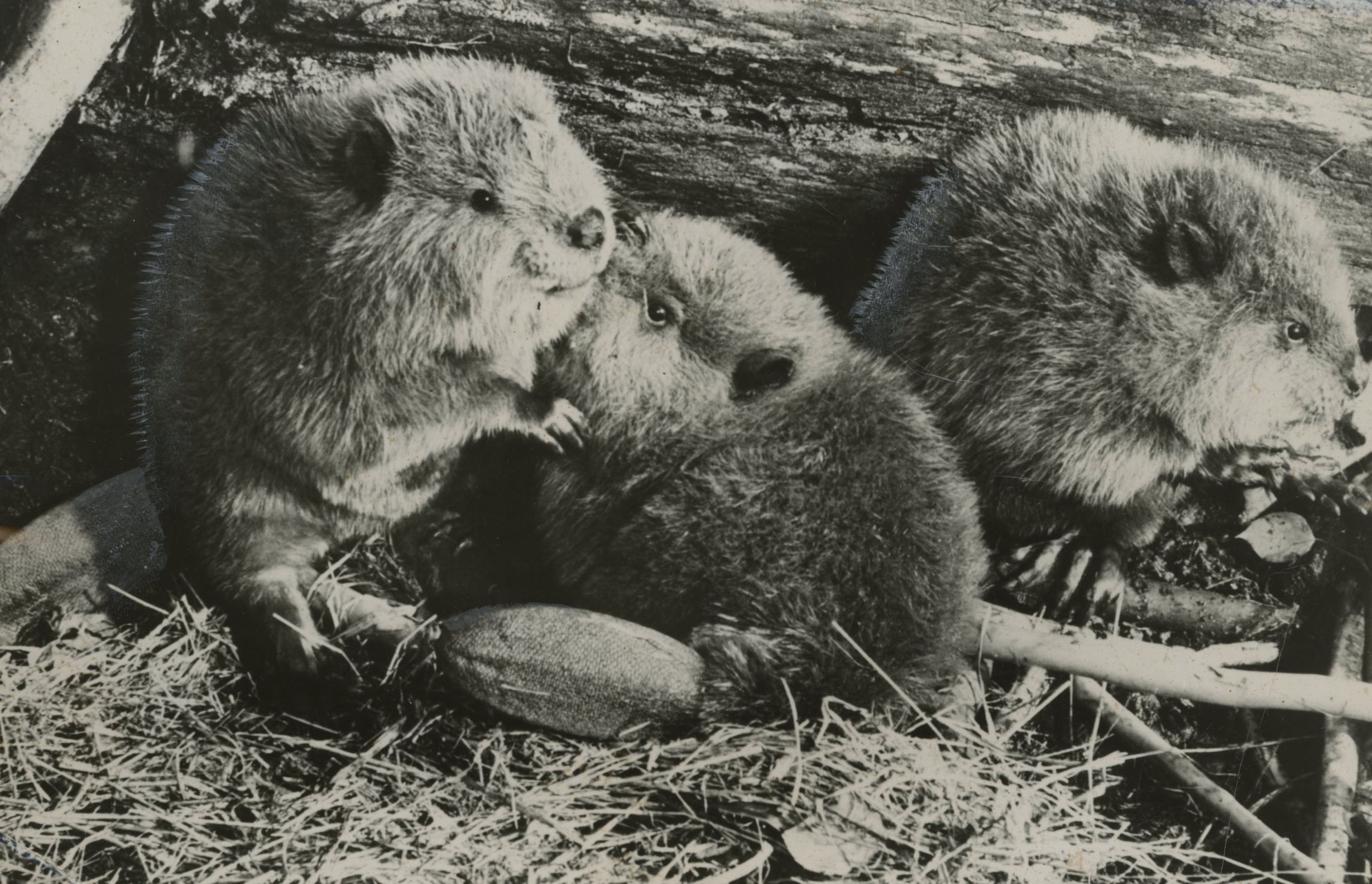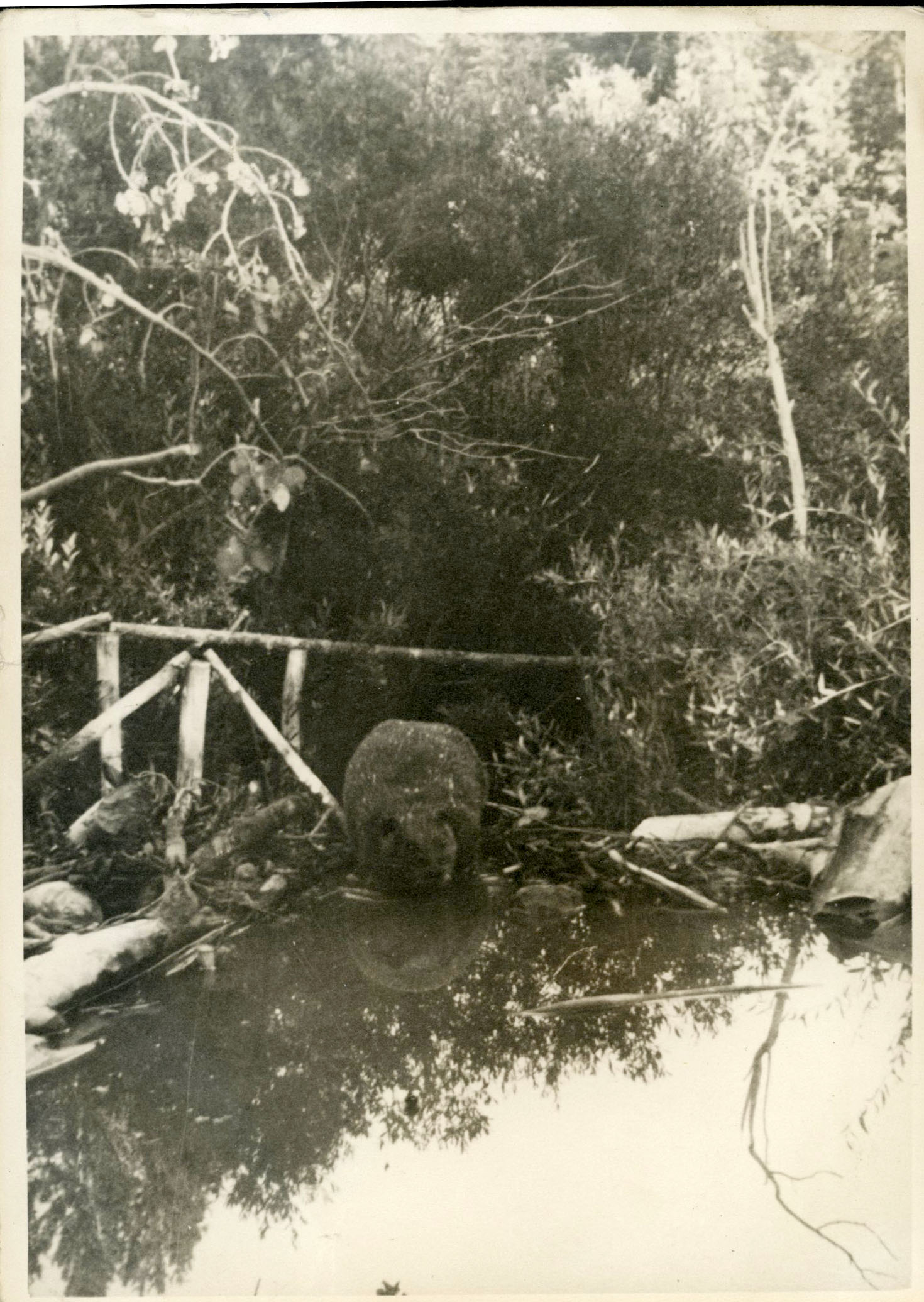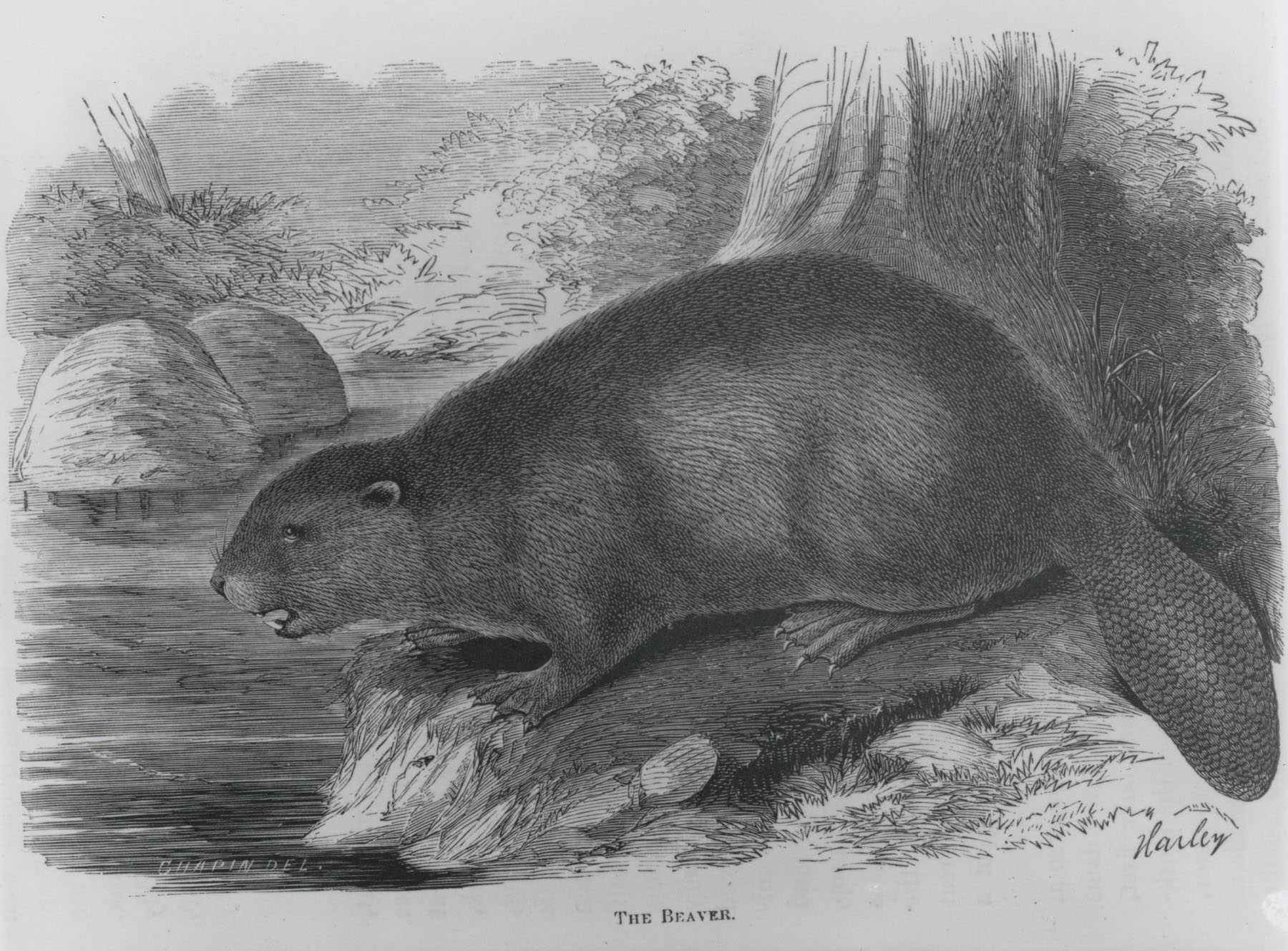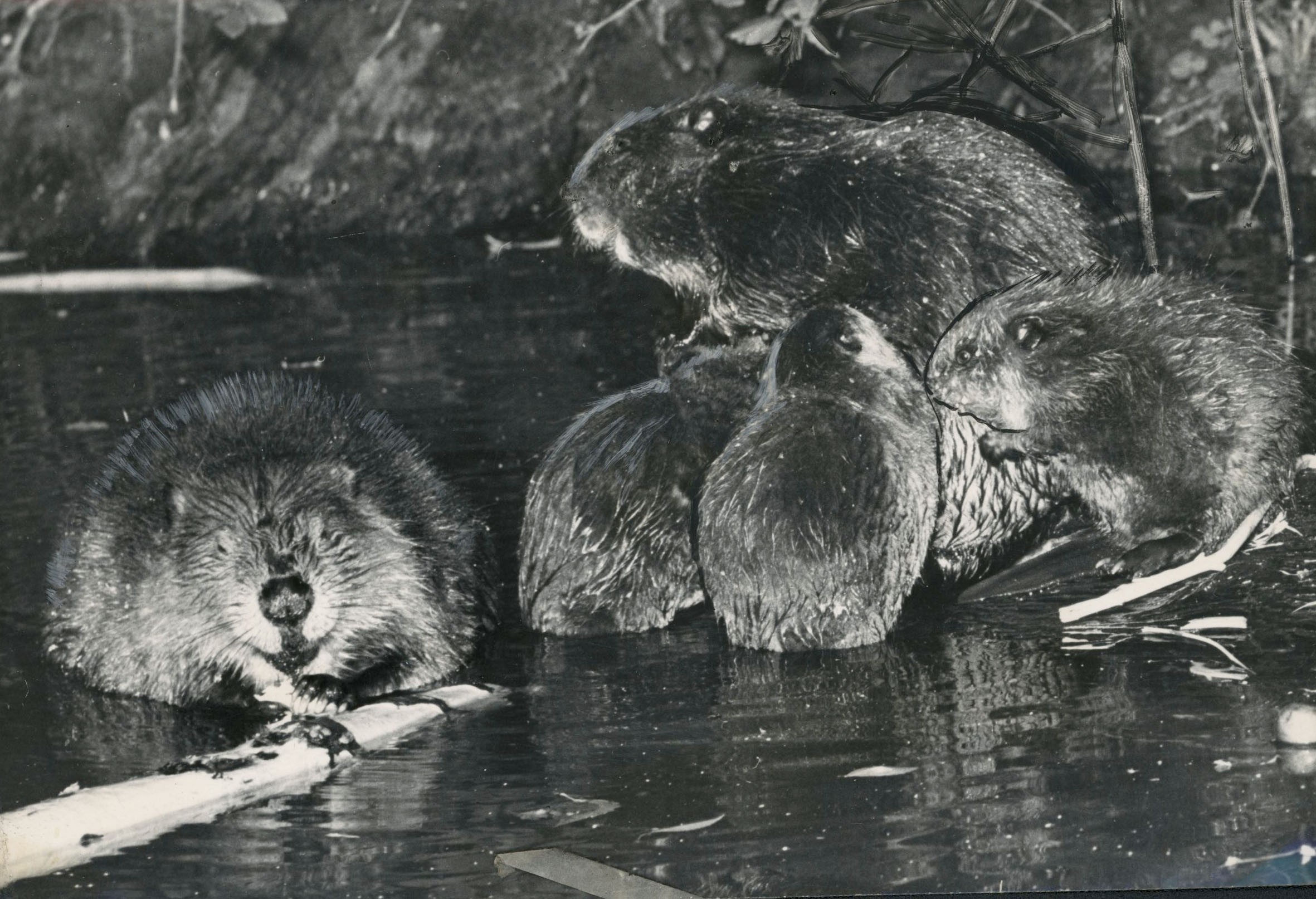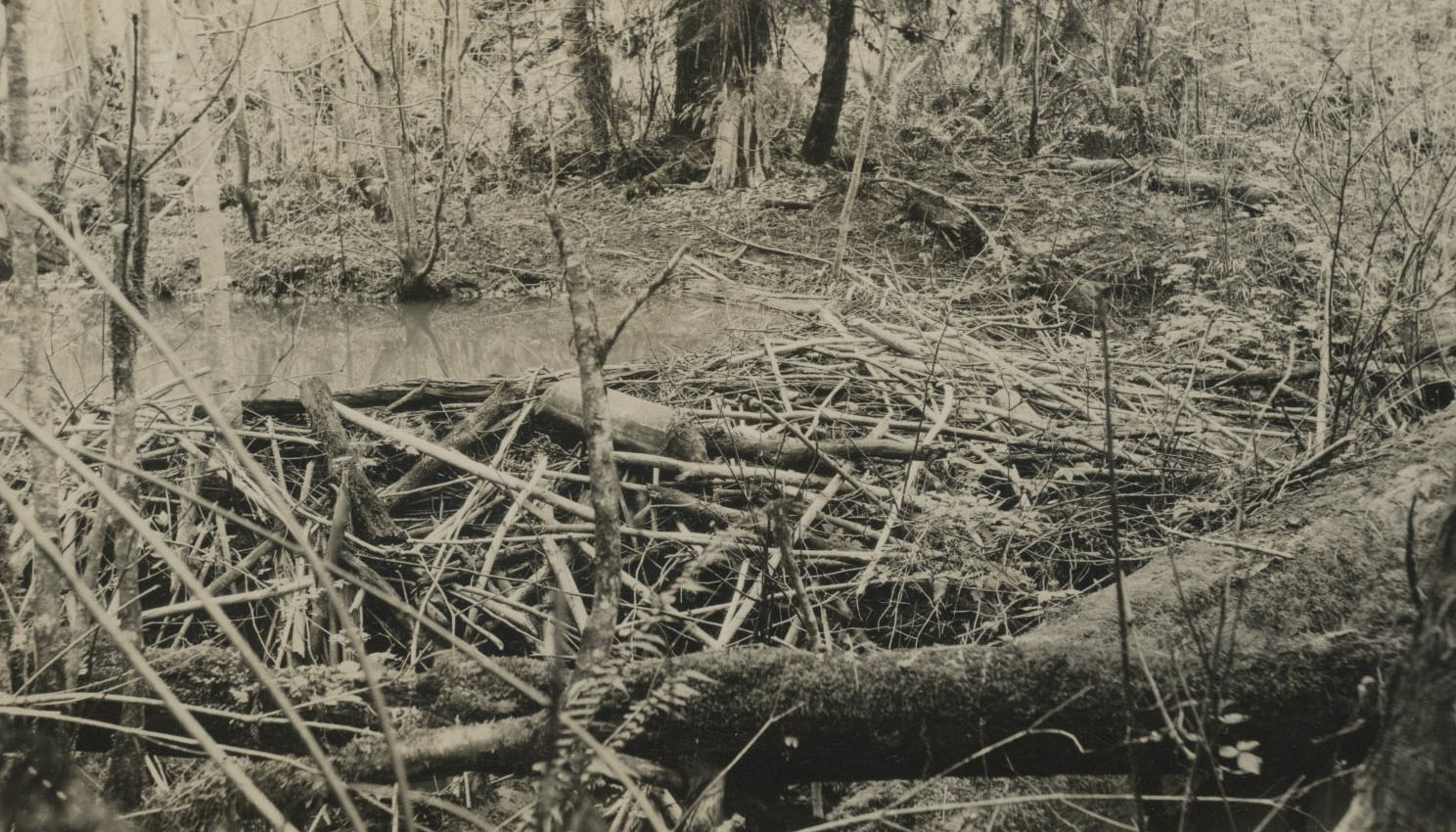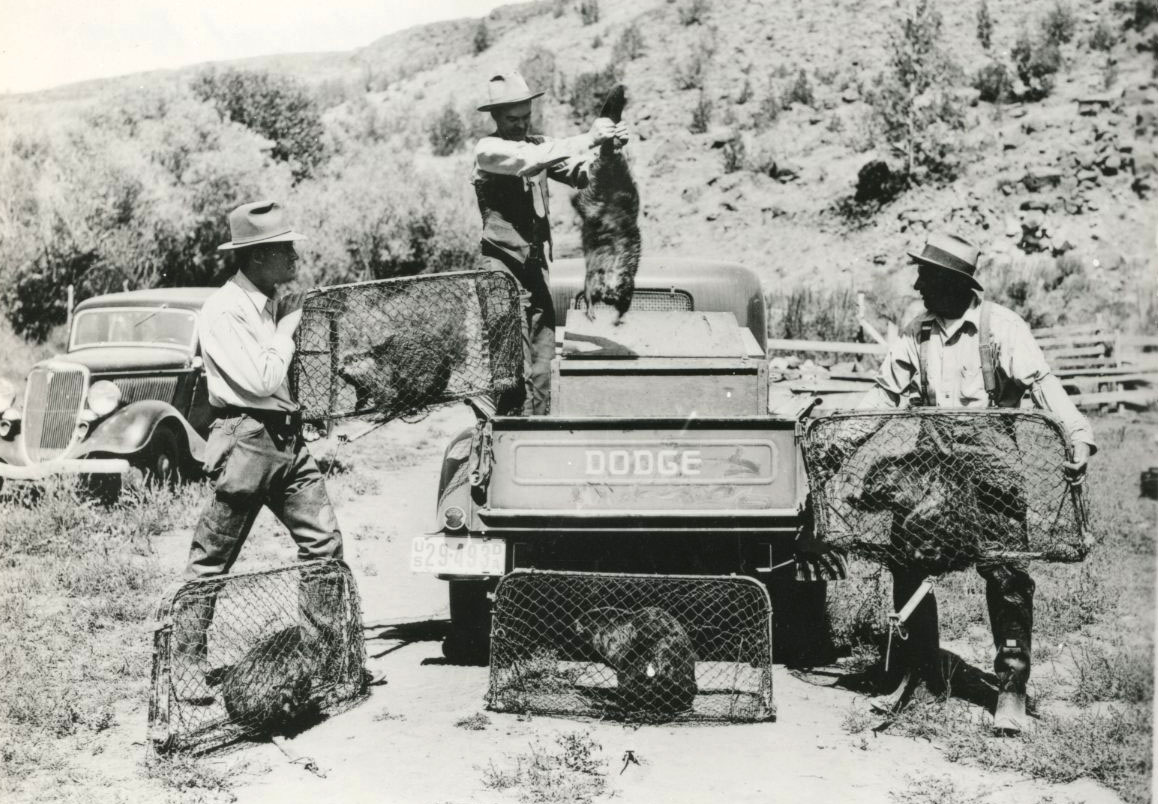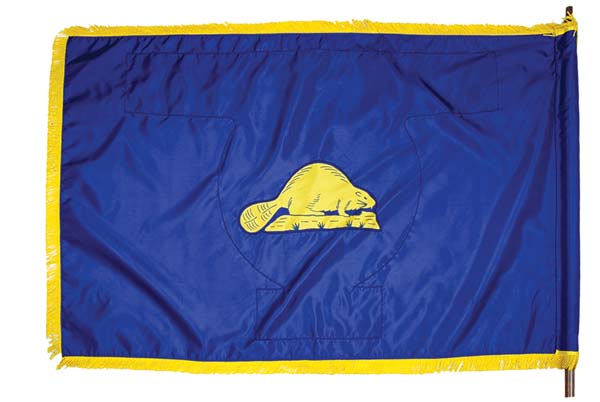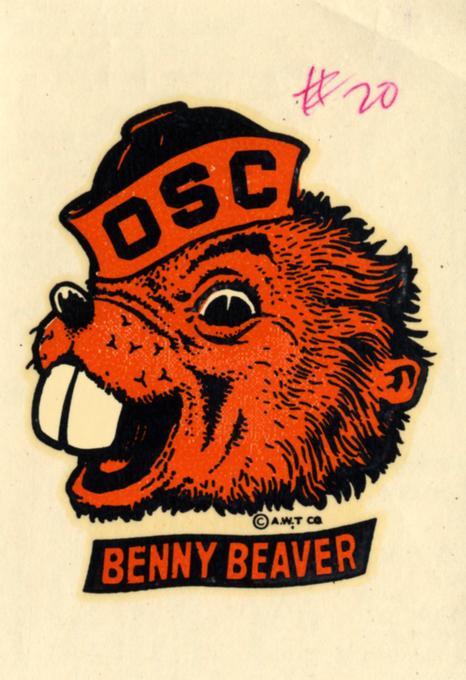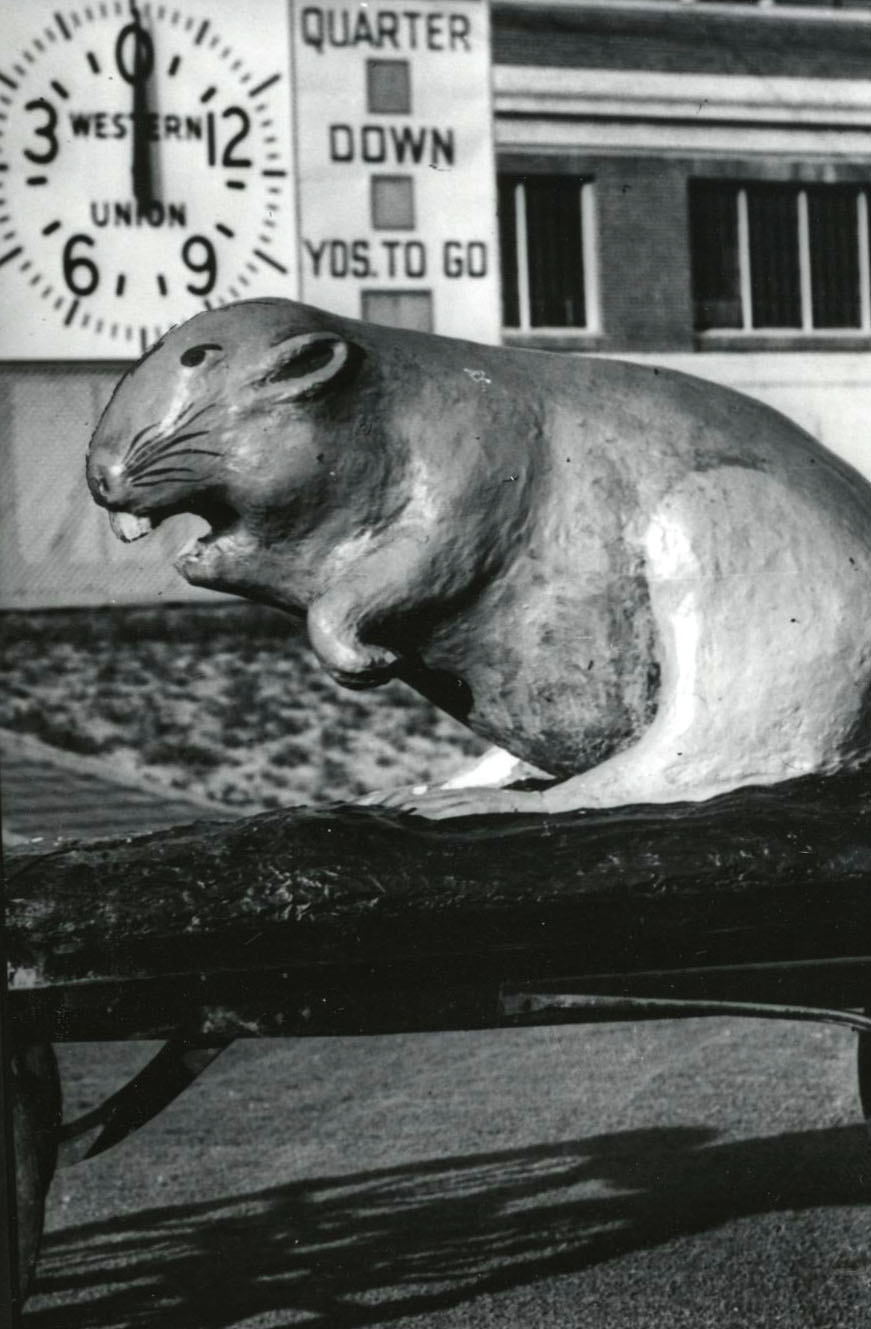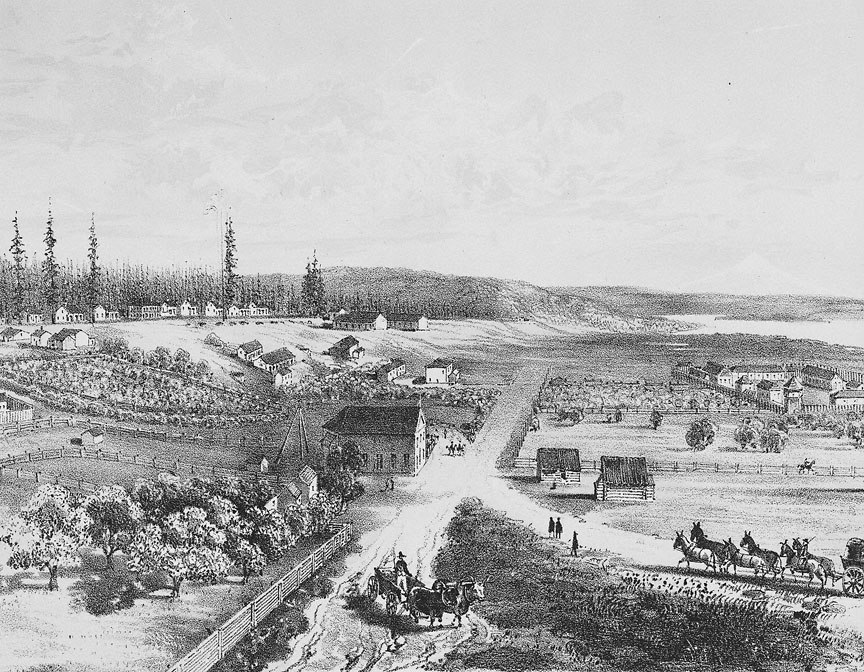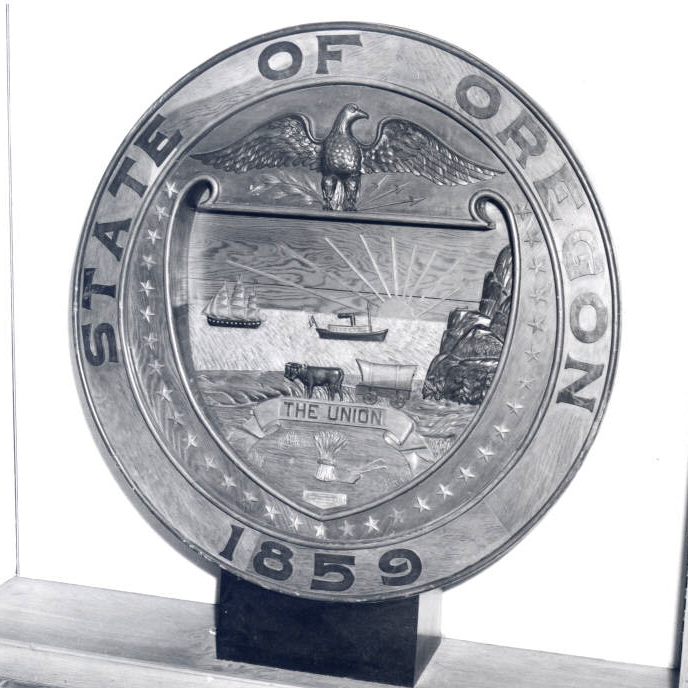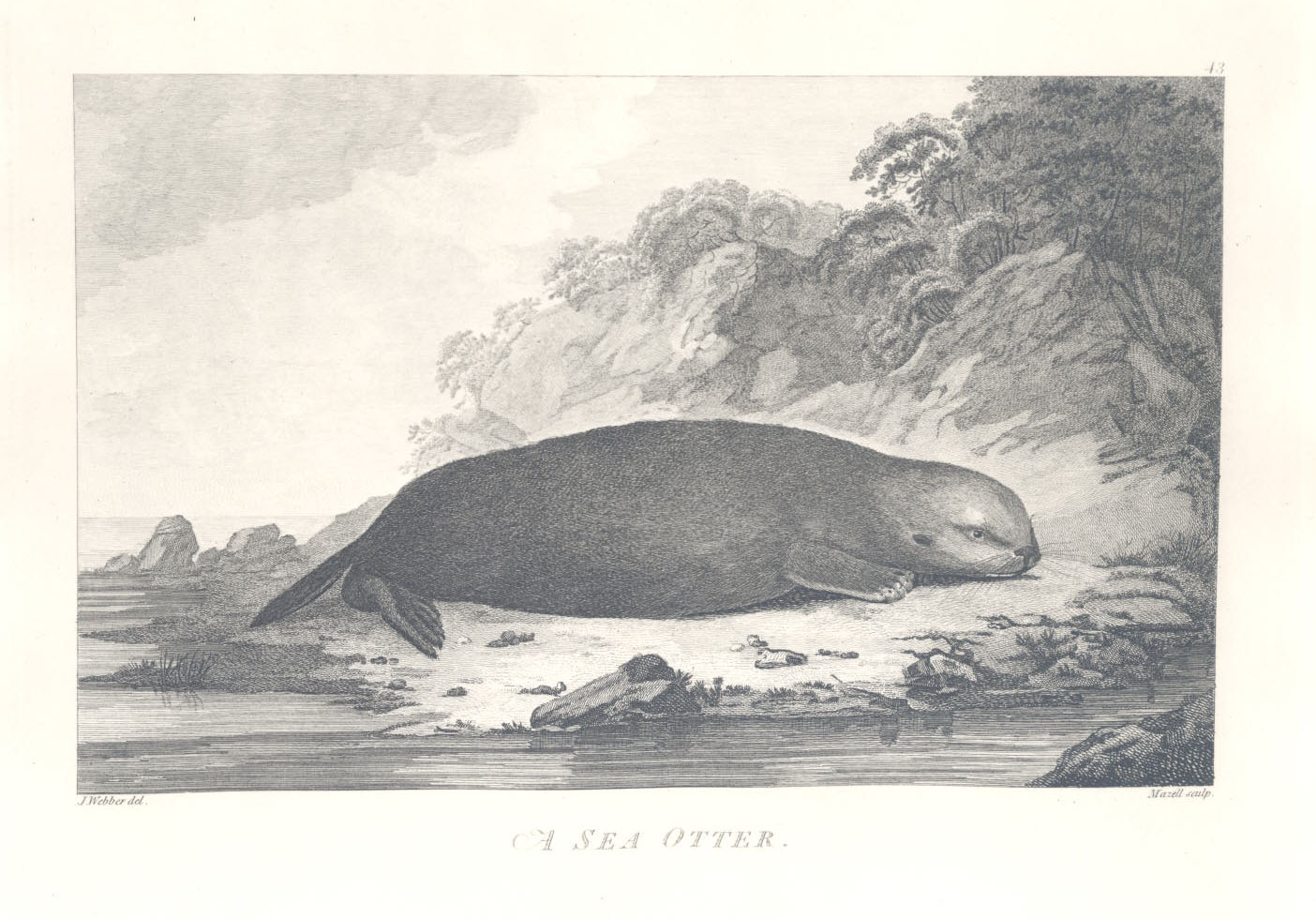The American Beaver (Castor canadensis) is often called “nature’s engineer” because of its practice of building dams in streams and rivers. Nearly wiped out in much of their historic range by early fur trappers, beavers have been restored to many Oregon waters because of improved management, awareness of their benefits, and less demand for their fur. In recognition of its significance in Oregon history, the beaver was made the state symbol and placed on the reverse side of the Oregon state flag; it also became the mascot and nickname of Oregon State University (originally established as the Corvallis Academy in 1856).
Many of the first non-Natives in Oregon were fur trappers. Trapping was not regulated, and the beaver population declined as demand for high quality fur increased. By 1893, the number of beavers was so low that the Oregon legislature closed Baker and Malheur Counties to beaver trapping. This was followed by a statewide closure from 1899 to 1918, when beaver trapping was permitted in Benton and Marion Counties.
In 1923, beaver trapping was reopened statewide from November through February, except in national forests and in five southwest counties. The legislature again closed most of the state to beaver trapping in 1931, and the few excepted counties were included in the ban the next year.
In 1937, beaver management was directed to the State Game Commission (now the Oregon Department of Fish and Wildlife), which has regulated beaver trapping since then. Today, beaver trapping is open statewide for several months with specific area exceptions in some counties. Beaver management requires balancing the benefits that dams and ponds provide to fish, wildlife, water quality, and agriculture with the damage beavers can do to timber, crops, amenities, and culverts.
Beavers, North America’s largest rodent, can weigh as much as sixty-five pounds and measure nearly four feet in length. With a paddle-shaped tail, webbed hind feet, valves that close their ears and nose while diving, and a rich oil glad that waterproofs their fur, the animals are ideally suited for an aquatic environment. Mostly nocturnal, beavers eat a variety of vegetation and in winter depend on woody plants for most of their food, including hammer willows, vine and big leaf maples, alder, and cottonwood.
Beavers use their sharp incisor teeth to cut trees and, in smaller streams, build dams that create a deep-water pond where they are protected from predators and have access to their food supply. They also create entrances to dens built underground or lodges constructed of branches and logs in the water or on shore. In larger streams and rivers, beavers establish dens in stream banks. As part of a beaver family, known as a colony, mated adults can live together for life. Litters of up to eight kits, born in late spring, typically live in the colony for two years before searching for their own mates.
Beaver dams back water up and slow it down, creating ponds where adult fish can rest and juvenile salmon, steelhead, and trout can hide from predators and strong winter currents. The ponds catch fallen leaves where aquatic insects breed and become food for fish, amphibians, birds, and bats. Ponds also provide habitat for Oregon’s native mink, river otter, muskrats, turtles, frogs, and salamanders. The dams also create wetlands that help control flooding and improve water quality by filtering sediment, trapping silt, and removing toxic chemicals. At the same time, beaver dams can create problems for landowners, timber companies, and farmers by causing downstream flooding and property damage and compromising the integrity of septic systems, roads, and buildings.
In 2007, the Oregon Department of Fish and Wildlife formed the Beaver Work Group to improve communication and information on the competing benefits and costs of beaver management in the state. Biologists and researchers from state and federal agencies and tribal governments and representatives from trapping and conservation organizations, academia, landowners, and others are now working to improve understanding of beaver ecology and management.
-
![Photo by William Vandivert]()
Young beavers, 1956.
Photo by William Vandivert Courtesy Oregon Hist. Soc. Research Lib., Org Lot 568
-
![]()
Beaver work.
Courtesy Oregon Hist. Soc. Research Lib.Org Lot 311, box 6 f61
-
![]()
A beaver near a stream.
Courtesy Oregon Hist. Soc. Research Lib., 9860011
-
![]()
The Beaver, from The Trappers Guide.
Courtesy Oregon Hist. Soc. Research Lib., Orhi102614
-
![]()
A beaver in the Portland (Oregon) Zoo, 1957.
Courtesy Oregon Hist. Soc. Research Lib., Org Lot 568
-
![]()
A family of beavers, 1948.
Courtesy Oregon Hist. Soc. Research Lib., Org Lot 568
-
![]()
A beaver dam.
Courtesy Oregon Hist. Soc. Research Lib., Org Lot 311, box 6 f61
-
![]()
Beaver work.
Courtesy Oregon Hist. Soc. Research Lib., Org Lot 311, box 6 f61
-
![]()
Rangers trapping beavers in the Ochoco Forest for relocation, 1936.
Courtesy Oregon Hist. Soc. Research Lib., Orhi74795
-
![]()
Ted Howell, US Bureau of Fisheries, with beaver from Ochoco Forest, 1935.
Courtesy Oregon Hist. Soc. Research Lib., 011769
-
![]()
A beaver swimming near the Grand Coulee Dam, 1938.
Courtesy Oregon Hist. Soc. Research Lib., Orhi57841
-
![]()
Oregon state flag, back .
Courtesy State of Oregon
-
![]()
Benny Beaver, Oregon State College (OSU).
Courtesy Oregon State University Libraries, Memorabilia Coll.
-
![]()
Plaster beaver used as mascot for Oregon State College (OSU) football game, 1939.
Courtesy Oregon Hist. Soc. Research Lib., 001364
-
![]()
Benny the Beaver, OSU, 1988.
Courtesy Oregon State University Libraries
-
![]()
Oregon State University beaver logo, 2017.
Courtesy Oregon State University
Related Entries
-
![Fur Trade in Oregon Country]()
Fur Trade in Oregon Country
The fur trade was the earliest and longest-enduring economic enterprise…
-
![Hudson's Bay Company]()
Hudson's Bay Company
Although a late arrival to the Oregon Country fur trade, for nearly two…
-
![Oregon State Flag]()
Oregon State Flag
Oregon is the only state in the country whose flag has a different imag…
-
![Oregon State symbols]()
Oregon State symbols
Oregon has a number of officially designated symbols, ranging from thos…
-
![Sea Otter]()
Sea Otter
America’s introduction to the lucrative Pacific Northwest Coast fur tra…
Related Historical Records
Map This on the Oregon History WayFinder
The Oregon History Wayfinder is an interactive map that identifies significant places, people, and events in Oregon history.
Further Reading
Oregon Department of Wildlife: http://www.dfw.state.or.us/wildlife/living_with/beaver.asp
U.S. Federal Wildlife Service: http://www.fws.gov/oregonfwo/ToolsForLandowners/RiverScience/Beaver.asp
"Oregon Furbearer Trapping and Hunting Regulations." Oregon Department of Fish and Wildlife, July 1, 2016 -- June 30, 2018. http://www.dfw.state.or.us/resources/hunting/small_game/regulations/docs/Furbearer_Regulations.pdf

